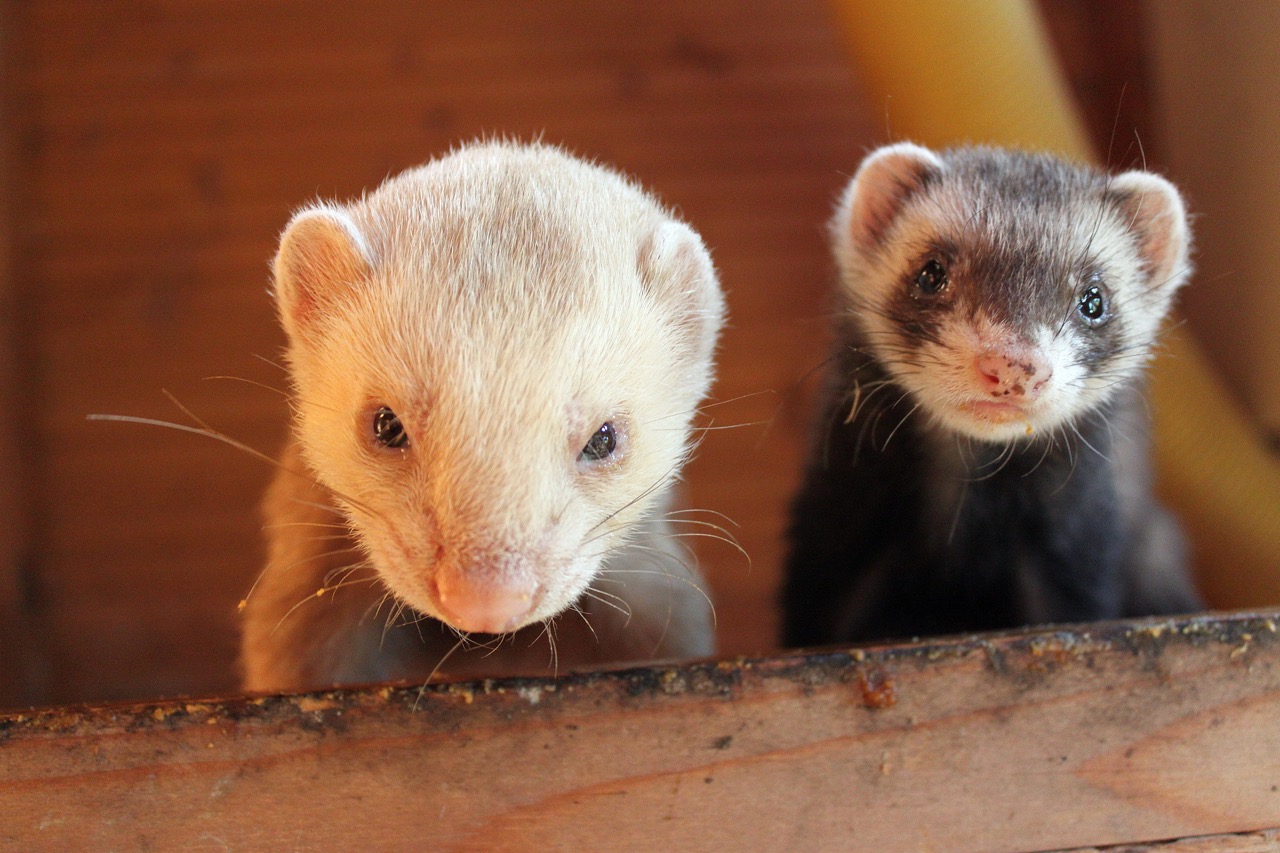Ferrets are known for their playful and curious nature, making them delightful companions for those willing to invest time and care into their upbringing. While having a single ferret can provide joy and companionship, many ferret owners are discovering the numerous benefits of having multiple ferrets. From enhanced social interaction to increased activity levels, multiple ferrets can create a vibrant and engaging household. This article explores the benefits of having multiple ferrets, offering insights into their social needs, mental stimulation, physical activity, and essential care practices.
Understanding the Social Nature of Ferrets in Groups
Ferrets are inherently social animals that thrive on companionship. In the wild, they live in family groups, which fosters strong bonds and social behaviors among them. When kept in captivity, ferrets often feel lonely or depressed when isolated. Having multiple ferrets allows them to interact with one another, mimicking their natural social structures. This interaction can lead to happier and more content pets, as they engage in play and grooming behaviors that reinforce their social bonds.
Additionally, socialization among ferrets can reduce behavioral issues that stem from boredom or loneliness. For example, a single ferret may resort to destructive behaviors, such as digging or chewing on furniture, as a way to cope with isolation. In contrast, ferrets living in pairs or groups are less likely to engage in such behaviors. They find alternative outlets for their energy and curiosity through play and exploration with their companions, leading to a more harmonious living environment for both the pets and their owners.
Moreover, introducing multiple ferrets can help with the integration of new pets into your home. Ferrets are generally adaptable, and having an existing group can make the transition smoother for a newcomer. Established ferrets can teach a new addition the household dynamics, including where to play, where to sleep, and how to interact with their human caretakers. This social learning can facilitate a quicker adaptation period and a more cohesive family unit among your ferrets.
Enhancing Mental Stimulation with Multiple Ferrets
Mental stimulation is crucial for the well-being of ferrets, and having multiple ferrets provides a dynamic environment that fosters mental engagement. When ferrets interact with one another, they learn from each other through play, exploration, and even rivalry. These interactions can promote cognitive development as they navigate social cues, assert themselves, and negotiate their roles within the group. This enriched environment keeps them mentally sharp and can delay the onset of age-related cognitive decline.
The variety of personalities and play styles among multiple ferrets also contributes to increased mental stimulation. Ferrets are known for their playful antics, and having companions allows them to engage in diverse forms of play that they might not experience alone. From wrestling and chasing to cooperative games, the possibilities for engagement expand significantly with the presence of multiple ferrets. Owners can even create interactive play areas and toys that encourage group play, enhancing the ferrets’ cognitive skills while providing entertainment.
Lastly, the presence of other ferrets can reduce stress and anxiety in individual ferrets. A ferret that feels secure in its social group is likely to be more confident and adventurous. This sense of security allows ferrets to explore their environment more freely, leading to additional mental stimulation. By fostering an environment where ferrets can engage both socially and mentally, owners contribute to the overall health and happiness of their pets.
The Advantages of Physical Activity Among Ferret Companions
Physical activity is essential for the health and well-being of ferrets, as they require regular exercise to maintain their physical condition and avoid obesity. When multiple ferrets are present, they naturally encourage each other to be active. The playful nature of ferrets means that they often engage in spontaneous bouts of running, chasing, and wrestling, which can lead to more robust exercise compared to solitary play. This collective energy keeps ferrets fit and helps develop their muscular strength and coordination.
Furthermore, having multiple ferrets can lead to the establishment of a routine that encourages physical activity. Owners can design play sessions that involve all the ferrets, providing opportunities for social interaction and exercise simultaneously. This group dynamic can promote a healthy lifestyle, as ferrets are more likely to engage in active play when they see their companions doing the same. Ultimately, the shared enthusiasm for activity can foster a more active household overall.
In addition to enhancing physical fitness, the presence of multiple ferrets can reduce stress-related health issues that may arise from inactivity. Ferrets that are bored or isolated may lead sedentary lives, leading to weight gain and associated health problems. By providing an environment where ferrets can play together, owners can help mitigate these risks. The combination of social interaction and physical activity ensures that ferrets remain vibrant and healthy throughout their lives.
Tips for Proper Care and Management of Multiple Ferrets
Caring for multiple ferrets requires careful planning and attention to their individual needs. First and foremost, owners should ensure that they have enough space for all their pets to interact comfortably. A larger living area with plenty of room to explore will help prevent territorial disputes and promote harmonious play. Designating specific areas for sleeping, eating, and play can facilitate smooth interactions and minimize stress among the ferrets.
Feeding multiple ferrets also requires attention to detail. It’s essential to provide high-quality, species-appropriate food in quantities that reflect the number of ferrets in the household. Owners should monitor each ferret’s food intake to ensure that all pets are receiving proper nutrition and are not overeating or competing aggressively for food. Regular veterinary check-ups are crucial for monitoring the health and weight of each ferret, allowing for timely interventions if any issues arise.
Finally, socializing ferrets is vital to their well-being. Introducing new ferrets should be done gradually and with supervision to ensure that all animals adjust well to the new dynamics. Providing enrichment activities and toys specifically designed for multiple users can foster cooperation and reduce competition. By engaging in regular play sessions and ensuring a safe and supportive environment, owners can create a loving and thriving household for their ferret companions.
In conclusion, while a single ferret can bring joy and companionship, the benefits of having multiple ferrets are profound. From social interaction that mirrors their natural instincts to increased mental and physical stimulation, a multi-ferret household enriches the lives of these playful animals. With thoughtful care and management, owners can foster a vibrant, engaging environment that promotes the health and happiness of their ferrets. Embracing the dynamic of multiple ferrets can lead to a deeper bond between pets and their humans, creating a fulfilling and lively household.










